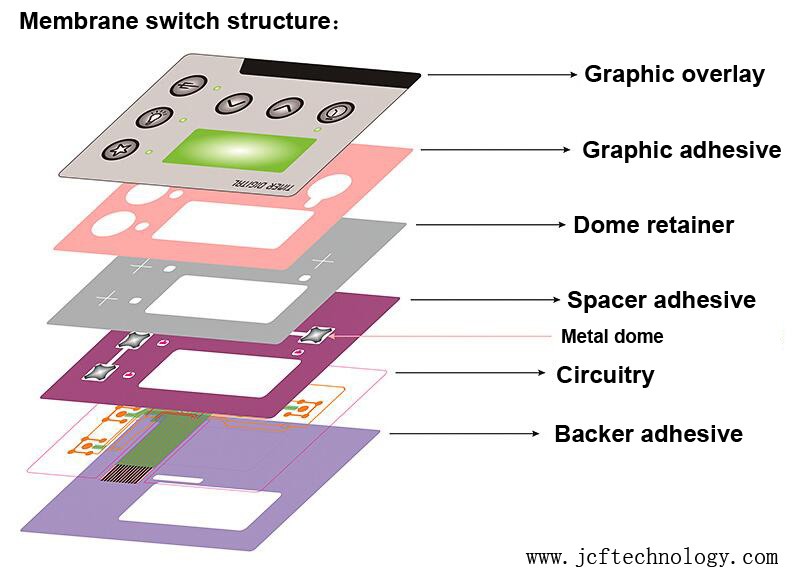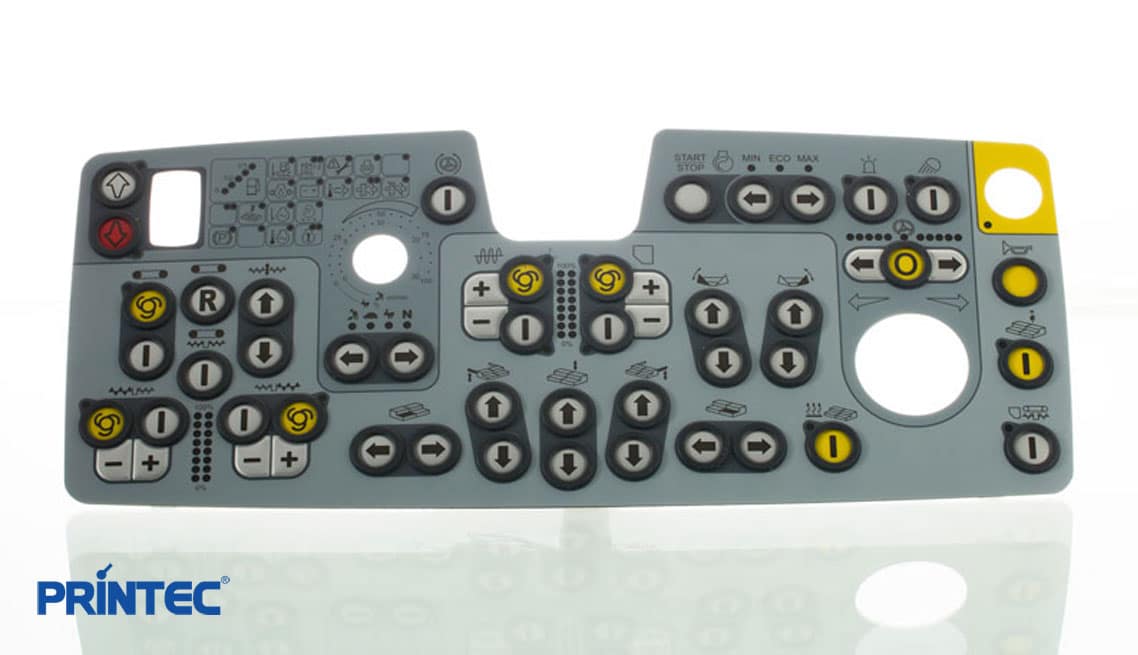The Benefits of Utilizing Membrane Layer Changes in Customer Electronics
Membrane layer switches are increasingly acknowledged for their significant advantages in customer electronic devices, specifically in improving individual communication and simplifying manufacturing processes. The adaptability in design allows for tailored remedies that meet varied consumer requirements.
Enhanced Customer Experience
In today's affordable landscape of consumer electronic devices, boosted individual experience is critical; almost 85% of individuals focus on instinctive interfaces. Membrane layer switches play an important function in accomplishing this degree of usability.
The tactile comments given by membrane layer switches is essential for guiding user activities, making sure that commands are registered accurately. This feedback mechanism lessens errors and heightens individual satisfaction, promoting a positive relationship between the user and the gadget. The customizable nature of membrane layer switches over enables manufacturers to customize user interfaces to certain user needs, making gadgets a lot more accessible and inviting.
Furthermore, membrane layer switches can integrate backlighting and graphic overlays, additionally improving exposure and usability in diverse environments. This versatility makes certain that tools continue to be easy to use and useful, no matter of the setting. On the whole, the integration of membrane layer switches into consumer electronics significantly boosts individual experience, driving brand loyalty and fulfillment in a progressively affordable market.
Affordable Production
Customer electronics producers are frequently looking for ways to stabilize high quality with price, and membrane switches use an engaging solution for cost-effective production. membrane switch. These elements are naturally less complex than traditional mechanical buttons, which minimizes both production prices and complexity. The light-weight style of membrane layer switches permits lower delivery costs and simpler integration right into portable devices, better improving their allure in an open market

Manufacturers can create membrane layer switches in high quantities, making use of economic climates of range. This mass manufacturing capability ensures constant high quality while dramatically decreasing per-unit costs. Furthermore, the materials made use of in membrane layer buttons, such as polyester and polycarbonate, are typically cheaper than those needed for conventional button innovations, adding to general cost savings.
The production process for membrane layer switches over typically requires fewer steps and less labor compared to other switch types. This streamlined approach not only saves money on labor prices yet additionally increases time-to-market, enabling companies to respond promptly to consumer demand. The combination of reduced material expenses and reliable production procedures settings membrane layer changes as a clever financial investment for producers aiming to provide top quality customer electronic devices at affordable cost points.
Design Flexibility and Modification
While standard mechanical switches often impose limitations on layout as a result of their bulk and required placing devices, membrane buttons supply unparalleled versatility and personalization options for customer electronics. This ingenious innovation allows developers to produce sleek, low-profile interfaces that can flawlessly integrate right into numerous item aesthetics, from smartphones to kitchen area home appliances.
Membrane layer buttons can be generated in basically any form or size, making it possible for producers to tailor the design to specific ergonomic and practical requirements. This flexibility not only enhances individual experience however also enables creative layouts that line up with brand identity. Furthermore, the usage of published graphics on membrane layer switches supplies the possibility for dynamic colors and intricate styles, which can be conveniently changed without significant price effects.
Furthermore, membrane layer switches can incorporate multiple performances right into a single layer, minimizing the requirement for multiple components and streamlining setting up processes. This structured layout method minimizes area and weight, making it excellent for compact consumer electronics. Overall, the design versatility and modification capabilities of membrane switches empower makers to introduce, inevitably resulting in more interesting and easy to use products.
Durability and Dependability
As technology proceeds to advance, the durability and dependability of membrane layer switches have actually come to be important considerations for producers in the consumer electronic devices industry. Membrane layer switches are created to stand up to extreme environmental problems, consisting of temperature fluctuations, wetness, and dust direct exposure. Their durable building and construction often includes multi-layered products that offer a reliable obstacle versus contaminants, making sure durability and regular efficiency.
Along with ecological resistance, membrane layer changes offer superior mechanical reliability. Unlike conventional mechanical buttons, which may use out with time, membrane layer switches over utilize a sealed right here design that decreases the risk of mechanical failing. The absence of moving components not just boosts their lifespan yet also minimizes damage, making them ideal for high-usage applications.
In addition, membrane switches can sustain a substantial variety of actuations without loss of performance, often surpassing millions of cycles (membrane switch). This resilience equates to reduce substitute prices and decreased downtime for producers and customers alike. Overall, the mix of ecological strength and mechanical dependability makes membrane layer switches a website link calculated choice for customer electronics, making certain that gadgets remain efficient and operational throughout their intended life-span

Streamlined Item Development
The durability and reliability of membrane layer switches over dramatically add to streamlined item development in the consumer electronics industry. By incorporating these buttons early in the design process, makers can reduce the complexity and number of components needed in their products. Membrane buttons are lightweight and small, permitting more reliable space usage within gadgets, which can bring about streamlined assembly procedures.

The convenience of producing membrane layer switches also plays a vital role in item advancement. With modern printing methods and products, manufacturing can be scaled efficiently, reducing and lessening lead times waste. This causes reduced production prices, boosting total earnings.

Final Thought
In verdict, membrane switches dramatically enhance customer electronics by offering an enhanced customer experience, economical production procedures, and functional layout options. Their longevity and dependability make certain regular efficiency in different settings, while streamlined product advancement promotes quicker time-to-market. These advantages jointly add to the innovation and functionality of customer gadgets, addressing the progressing demands of customers efficiently. The integration of membrane layer switches over represents a tactical choice for manufacturers looking for have a peek here to maximize product layout and efficiency.
Membrane buttons are significantly acknowledged for their significant advantages in consumer electronic devices, especially in boosting individual communication and streamlining production processes. Furthermore, the materials made use of in membrane switches, such as polyester and polycarbonate, are commonly less pricey than those needed for standard switch modern technologies, adding to general expense savings.
The production process for membrane switches over generally requires less steps and much less labor contrasted to other switch types. Unlike conventional mechanical switches, which may wear out over time, membrane layer switches make use of a covered layout that lessens the risk of mechanical failing.In verdict, membrane changes dramatically enhance customer electronics by giving an enhanced user experience, economical manufacturing procedures, and versatile design choices.